I grew up in Portland, Oregon, where small-batch, locally sourced, micro-brewed, organic food is practically a religion.
If you’ve seen the comedy show “Portlandia”, you’ll remember the skit where the main characters go to a farm-to-table style restaurant and are so concerned about the source of their food that they ask to be taken to the farm to see the chickens and make sure they’re happy before ordering roasted chicken.
It’s a hyperbolic depiction of Portland, but it isn’t far from the truth in Costa Rica. Countless times here, I’ve found myself eating a meal while gazing out at the farm where it was produced.
In Costa Rica, farm-to-table isn’t a trend or a buzzword – it’s a way of life.
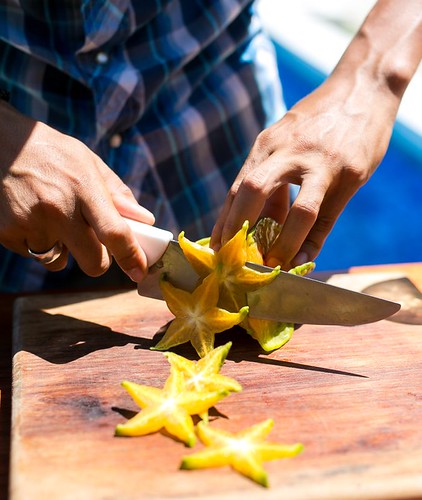
It’s not uncommon for families to keep chickens out back for eggs (and, on special occasions, an aromatic pot of slow-cooked sopa de pollo – homemade chicken soup) and to grow lush, expansive fruit trees that produce a bounty of plump tropical fruits ripe for afternoon snacks and mango-papaya smoothies. Produce is often purchased from neighbors with farms or from the local farm truck that drives around selling plantains and avocados.
Backyard gardens provide any number of herbs and spices for both flavor and medicinal purposes. If you’re feeling under the weather, it’s not uncommon for neighbors to bring over some herbal treatments. I once drank a cup of the most neon green, bitter, hideous-tasting tea made from the gavilana herb when I had an upset stomach. When I finished gagging over the taste, I felt immediately better.
Along sleepy coastal areas dotted with fishing villages, like Puerto Jimenez on the Osa Peninsula, fishermen wade knee-deep into the ocean to catch fish. You’ll pass them walking back with their catch, shiny silver sea bass or red snapper tied to their belt, ready to be grilled whole and served slightly battered and fully delicious. Along Lake Arenal, freshwater fish abound. There’s even a bar that keeps a pool of tilapia out back – patrons can watch their meal go from water to table.

In Costa Rica’s Central Valley, thick green hills are lined with coffee farms, where one can drink a cup of freshly brewed coffee while saying good morning to the person who picked the beans that eventually became their warm morning pleasure. In southern areas, like the Caribbean coast and the Osa Peninsula, the jungle is teeming with some of the world’s finest cacao, growing freely alongside banana trees and howler monkeys. Artisan chocolatiers, tropical Willy Wonkas, cultivate and process these cacao beans to produce chocolates humble in appearance but opulent and wildly complex in flavor.
Indeed, the richness of Costa Rica’s “rich coast” is equally paralleled by its rich land, producing some of the world’s most treasured crops.
What was largely a way of life for locals but shielded from tourists, who visited crowded beaches and ate at chain restaurants in their hotels, is now becoming a huge part of Costa Rica’s tourism industry as well thanks to the rise of ecotourism.
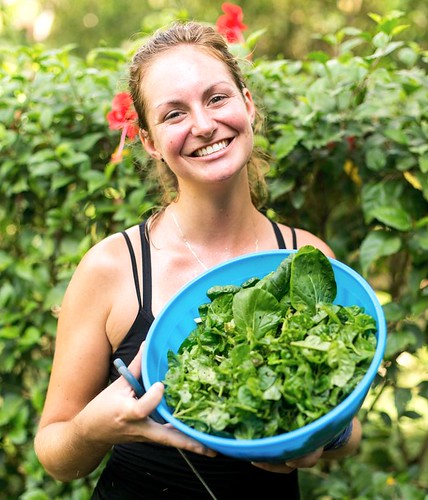
Ecotourism is tourism, often directed at rural or vibrant natural areas, that aims to support conservation efforts and sustainability. Costa Rica is a forerunner when it comes to ecotourism, with many places offering environmentally conscious lodging, conservation-focused experiences and some even farm-to-table experiences that allow tourists to experience this lifestyle and, hopefully, bring some new insight home with them.
But this farm-to-table lifestyle in Costa Rica is about more than just the tasty treats it brings forth – it’s about the country’s agricultural heritage and a gratitude for the earth and the sustenance it brings forth. In Costa Rica, where the national anthem praises the country’s “simple farm hands”, farming is one of the most revered positions, for it is farmers who work to fulfill our most basic of human needs.
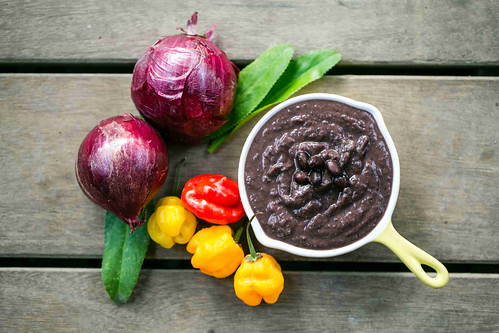
It’s no coincidence that a country that is largely “farm-to-table” would also be a beacon throughout the world for sustainability. A massive 25% of Costa Rican land is federally protected as national parks and nature reserves, and recreational hunting is illegal. They’ve broken world records for running entirely on renewable energy and plan to be carbon neutral by 2021.
Global changes begin with individual shifts in mentality (which is why we always bless our meals!).
Think about the difference between eating a meal that was produced in your backyard on one end, and eating chicken nuggets from McDonald’s on the other. With the former, you witness firsthand the cycle of birth and death that sustains our own lives, from the planting of the seeds to their growth and eventual harvest. With the latter, you can scarcely even identify what is in your food, let alone where it came from. This shift in eating habits grows within us a concept of “food traceability” – an active interest in where our food comes from, how it is produced, and by whom.
This is not just good for our bodies. It’s good for the world, too! Farm-to-table eating fosters a deeper understanding of the environment, how it functions, and why it is so critical to our survival, which creates within us a deeper desire to protect and fight for it. It builds connections between you and the people who produce your food and allows you to see firsthand the conditions in which they work, which serves to improve those conditions. It supports local farms and local economies – when you visit Costa Rica, do you want your money to go toward its residents or global corporations?
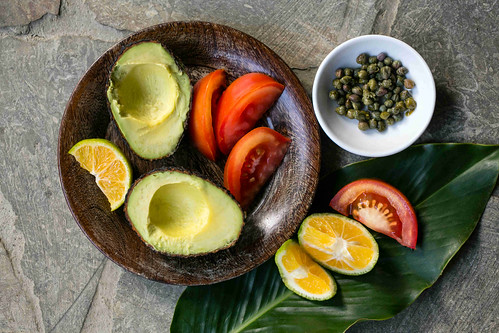
Farm-to-table also gives us a concept of food scarcity, a very real phenomenon to which we are often blinded. It’s easy to forget that food isn’t in infinite supply when restaurants give us endless menu options and fill our plates with heaping servings three times the size of what we should reasonably eat, when our garbage bags are filled with food we didn’t get around to using before the expiration date.
But this is an illusion built by privilege, and as soon as we forget that food is precious, that it is not available to everyone who needs it, we become blind to the truth of our food and the environment, and the urgent need to protect it. In growing food, you witness how easy it is to lose a crop to drought or insects or an animal to illness, and you see firsthand how tenuous our food source is.
Eating farm-to-table is a kind of minimalism, and like other forms of minimalism teaches you a greater appreciation for what you have. You may not have an endless menu of options at your fingertips whenever you’d like them; the farm is no McDonald’s. But when your food is fresh, healthy, and delicious, it doesn’t matter. Instead of feeling deprived of what don’t have, you feel satisfied on a deeper, fuller level by what you do.
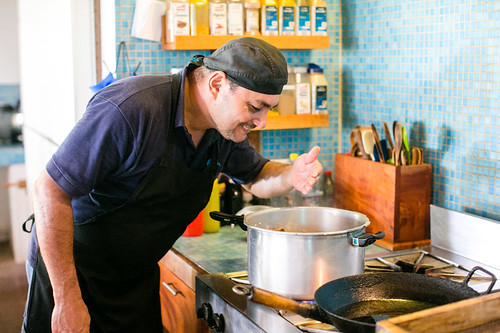
“In the end, we will conserve only what we love, we will love only what we understand, and we will understand only what we are taught.” –Baba Dioum
If you’re interested in experiencing our farm-to-table meals for yourself, book your room today and come visit us here at Blue Osa.
About The Author
 Elizabeth Aldrich is a lifelong traveler and freelance writer specializing in arts and entertainment, travel and lifestyle, and finance and business writing. She’s written for outlets as varied as Rawckus Music & Arts Magazine, Credit Karma, Sweden Tips, and Engadget. Elizabeth has a knack (read: obsession) for finding the best deals, travel hacks, and hidden gems everywhere she goes, which she blogs about at Temporary Provisions. You can find her playing the urban romantic in NYC, downing Stumptown coffee in her hometown of Portland, OR, or retreating from the madness in the rain forests of Costa Rica. To see more of her work, visit her at www.elizabethaldrich.com.
Elizabeth Aldrich is a lifelong traveler and freelance writer specializing in arts and entertainment, travel and lifestyle, and finance and business writing. She’s written for outlets as varied as Rawckus Music & Arts Magazine, Credit Karma, Sweden Tips, and Engadget. Elizabeth has a knack (read: obsession) for finding the best deals, travel hacks, and hidden gems everywhere she goes, which she blogs about at Temporary Provisions. You can find her playing the urban romantic in NYC, downing Stumptown coffee in her hometown of Portland, OR, or retreating from the madness in the rain forests of Costa Rica. To see more of her work, visit her at www.elizabethaldrich.com.







